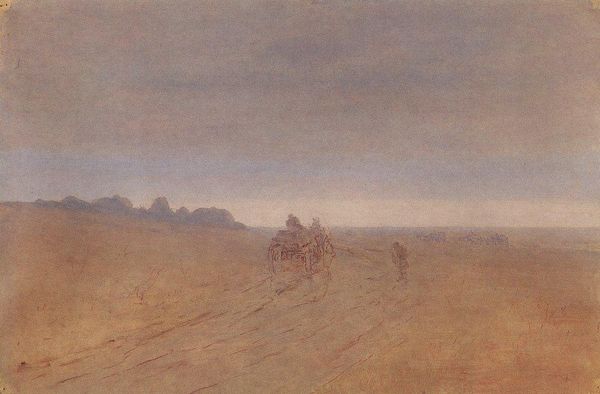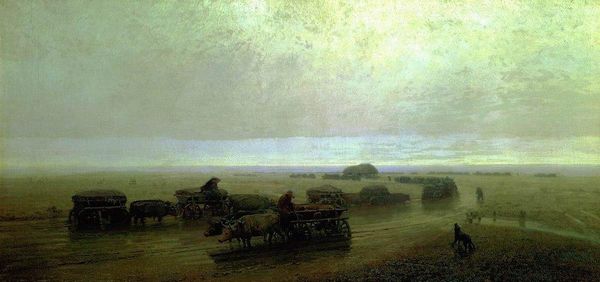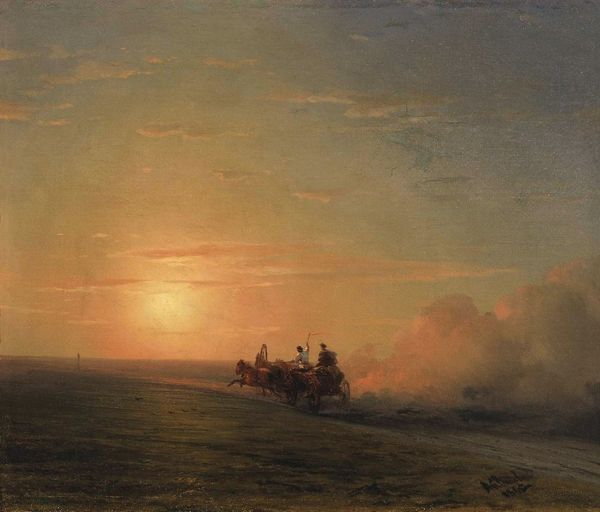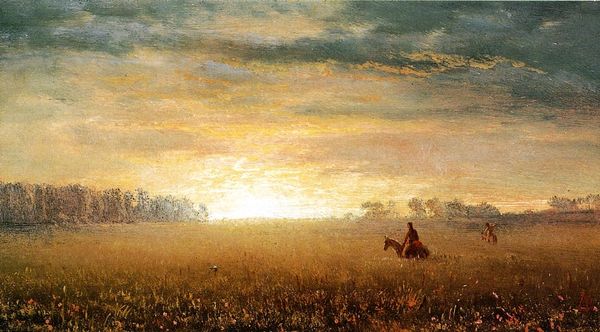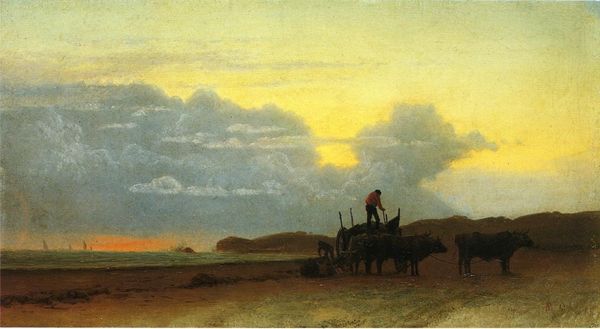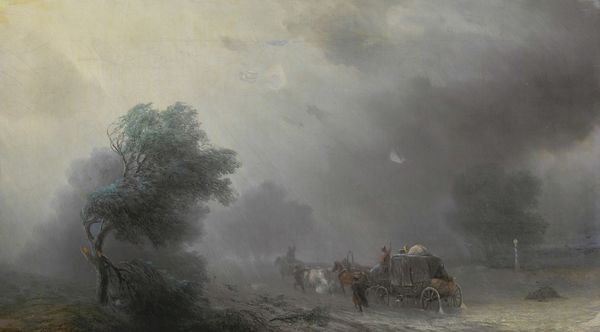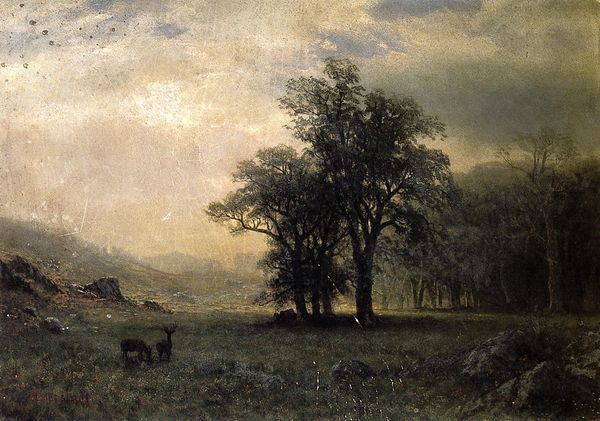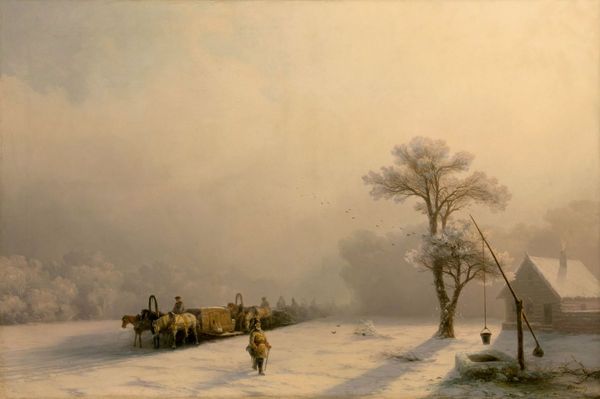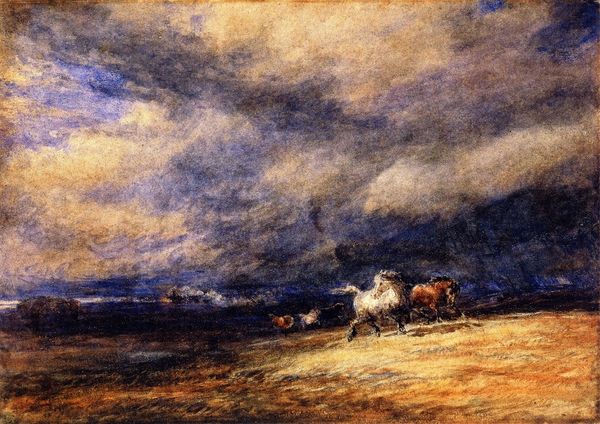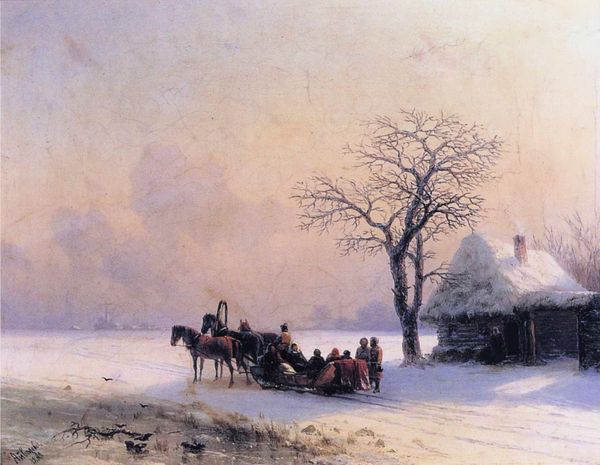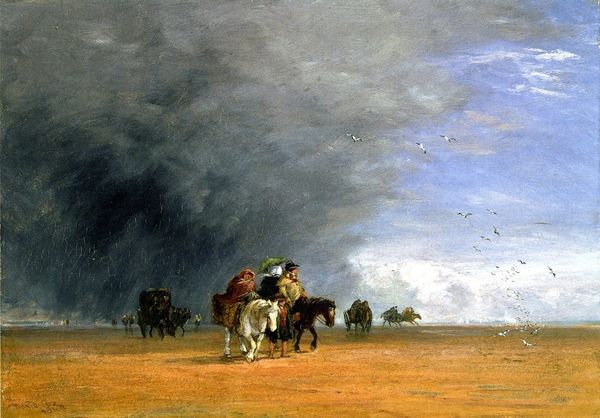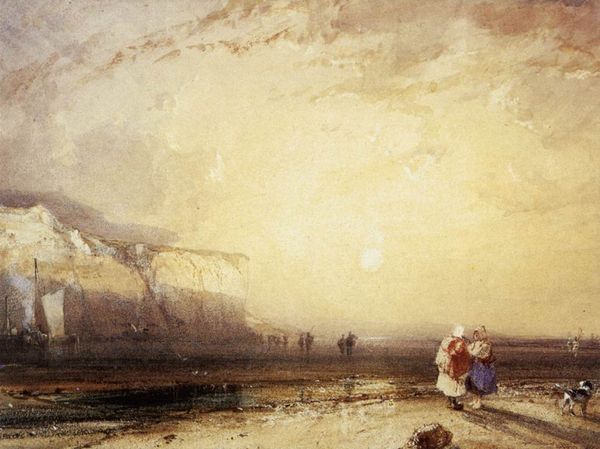
Dimensions: 70 x 110 cm
Copyright: Public domain
Curator: Immediately, I’m struck by the stillness, the kind that hums just beneath the surface. And the cool, muted palette…it's practically a symphony in gray. Editor: This is Arkhyp Kuindzhi's "Autumn Impassability of Roads," painted in 1872. Kuindzhi, of course, worked at a time when the role and representation of the Russian landscape was being heavily debated within the context of serfdom's abolition and rapid modernization. Curator: "Impassability" really gets at the heart of it, doesn't it? It feels…oppressive, this landscape. Like the mud itself is swallowing everything whole. Even the sky seems heavy. Editor: The figure on horseback, dwarfed by the landscape, really drives that point home. Are they free? Or still bound, tethered to the land even without formal chains? The muddy road becomes a metaphor for socio-economic barriers, literally hindering progress and mobility. Curator: Absolutely. And there's that lone tree in the distance, stark and barren against the mist. It’s beautiful, in a melancholic way, but it also suggests a certain…loneliness? As though this landscape isolates, rather than connects. Editor: Precisely. Romanticism favored grand, sublime landscapes. Kuindzhi subverts that, revealing the bleak reality of rural life, particularly in post-reform Russia. Consider, too, the emerging realist aesthetic, a deliberate turn from idealization towards gritty representations. The carriage's track seems to vanish into nothing, almost as if industrialization provides no path forward, a criticism against modernization maybe? Curator: Or a sense of uncertainty? Perhaps not a direct criticism, but a profound question mark hanging in the air, or rather, in the mist! I also love the textural contrast: the smooth, almost ethereal sky against the thickly applied, impasto-like mud. Editor: And the way he captures the quality of light, especially the luminescence trying to break through. The mist obscures, but also suggests possibility, doesn't it? Or a future on the horizon beyond our current view, as seen in post-Emancipation Russia? Curator: Yes, absolutely. So, it’s not just about literal impassability. It is also a metaphor for emotional, even spiritual stagnation. Editor: Perhaps we see this “Autumn Impassability” not as a full stop, but an ellipse, suggesting possibilities, though uncertain? Curator: Well said. It makes me want to go out, get my boots muddy, and look for whatever’s hidden in the mist. Editor: For me, this reminds us of art's potential to reflect on lived realities of different identities who negotiate limitations and struggles on the journey to shape new futures.
Comments
No comments
Be the first to comment and join the conversation on the ultimate creative platform.
